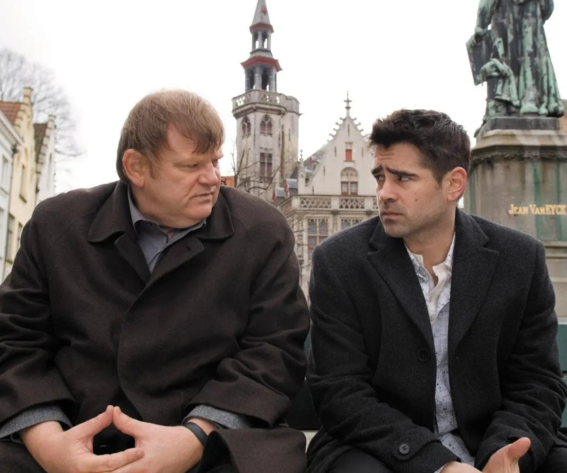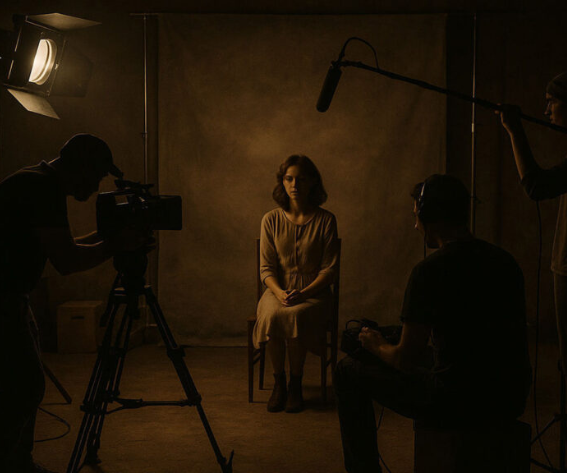When you think of Irish culture, leprechauns, shamrocks, and Guinness might come to mind. But there’s so much more to Ireland than these iconic symbols. Irish cinema, in particular, has a unique charm and identity that’s worth exploring. From gritty dramas to heartwarming comedies, Irish films have carved a niche for themselves in the world of cinema. So, let’s dive into the main characteristics of Irish cinema, where storytelling reigns supreme, and the Irish spirit shines through.
1. Rich Storytelling Tradition
Irish cinema has a deep-rooted storytelling tradition that goes back centuries. The Irish are known for their gift of telling stories, and this talent for weaving compelling narratives translates seamlessly into their films. Many Irish films are character-driven, focusing on the lives and experiences of ordinary people. These stories often resonate with universal themes of family, love, identity, and resilience, making them relatable to audiences worldwide.
2. Exploration of Irish Identity
One of the central themes of Irish cinema is the exploration of Irish identity, both historical and contemporary. Many Irish films delve into the country’s complex history, including its struggle for independence, the Troubles in Northern Ireland, and the impact of the Catholic Church on society. Films like “Michael Collins” (1996), “The Wind That Shakes the Barley” (2006) and “I, Daniel Blake” offer powerful insights into Ireland’s turbulent past and also into the present.
Moreover, contemporary Irish cinema often portrays the evolving identity of a modern, multicultural Ireland. Films like “Sing Street” (2016) and “Parked” (2010) depict a diverse and inclusive Ireland that is reflective of the country’s changing demographics.
3. Stunning Landscapes and Natural Beauty
Ireland’s breathtaking landscapes serve as a picturesque backdrop in many Irish films. From the rugged coastlines of the Wild Atlantic Way to the lush, green countryside, Ireland’s natural beauty adds a captivating visual dimension to its cinema. Directors often use these landscapes to enhance the storytelling, whether it’s the mystical charm of an ancient forest in “The Secret of Kells” (2009) the windswept cliffs in “The Guard” (2011), or the lonely, rocky coasts of the Aran Isles in “The Banshees of Inisherin” (2022).
4. Quirky Humor and Wit
Irish humor is renowned for its wit, charm, and irreverence, and it’s a defining characteristic of many Irish films. From sharp one-liners to subtle, dry humor, Irish cinema often delivers laughs that are both clever and endearing. Films like “In Bruges” (2008) and “Waking Ned Devine” (1998) are prime examples of how Irish humor can be both offbeat and heartwarming. And the humour mixes in well with the tragic, as can be seen in the masterpiece that is “Calvary” (2014).
5. Strong Focus on Characters
In Irish cinema, characters take center stage. Whether it’s a lovable rogue, a resilient underdog, or a complex antihero, Irish films are known for their memorable characters. These characters are often flawed and relatable, making them instantly endearing to audiences. Think of the unforgettable personalities in films like “The Commitments” (1991) or “Once” (2007), where the characters’ journeys are as compelling as the plot itself.
6. Independent Spirit
Irish cinema has a proud tradition of independent filmmaking. While Hollywood blockbusters may dominate the global box office, Irish filmmakers often embrace smaller budgets and more personal stories. The independent spirit of Irish cinema allows for creative experimentation and the exploration of niche subjects. This willingness to take risks has resulted in critically acclaimed films such as “My Left Foot” (1989) and one of my personal favourites of all time, “The Lobster” (2015).
7. Music and Song
Music holds a special place in the hearts of the Irish people, and it’s a recurring theme in Irish cinema. Whether it’s traditional Irish folk music or contemporary tunes, music plays a vital role in setting the tone and atmosphere of many Irish films. Films like “Once” and “The Commitments” are celebrated for their memorable soundtracks that add an extra layer of emotion to the storytelling.
8. Celebrating Small-Town Life
Many Irish films are set in quaint, small towns or villages. These settings create a sense of intimacy and community that resonates with audiences. Small-town life is often portrayed as charming, quirky, and filled with colorful characters. Films like “Waking Ned Devine” (1998) and “The Snapper” (1993) capture the essence of these tight-knit communities, where everyone knows each other’s business and secrets are hard to keep.
In Conclusion: A Unique Cinematic Flavor
Irish cinema, with its rich storytelling tradition, exploration of Irish identity, stunning landscapes, quirky humor, strong characters, independent spirit, musicality, and celebration of small-town life, offers a unique cinematic flavor that stands out in the global film landscape. While it may not always receive the same attention as Hollywood blockbusters, Irish cinema has earned a devoted following and continues to produce films that resonate with audiences on a deep, emotional level.









Leave a reply